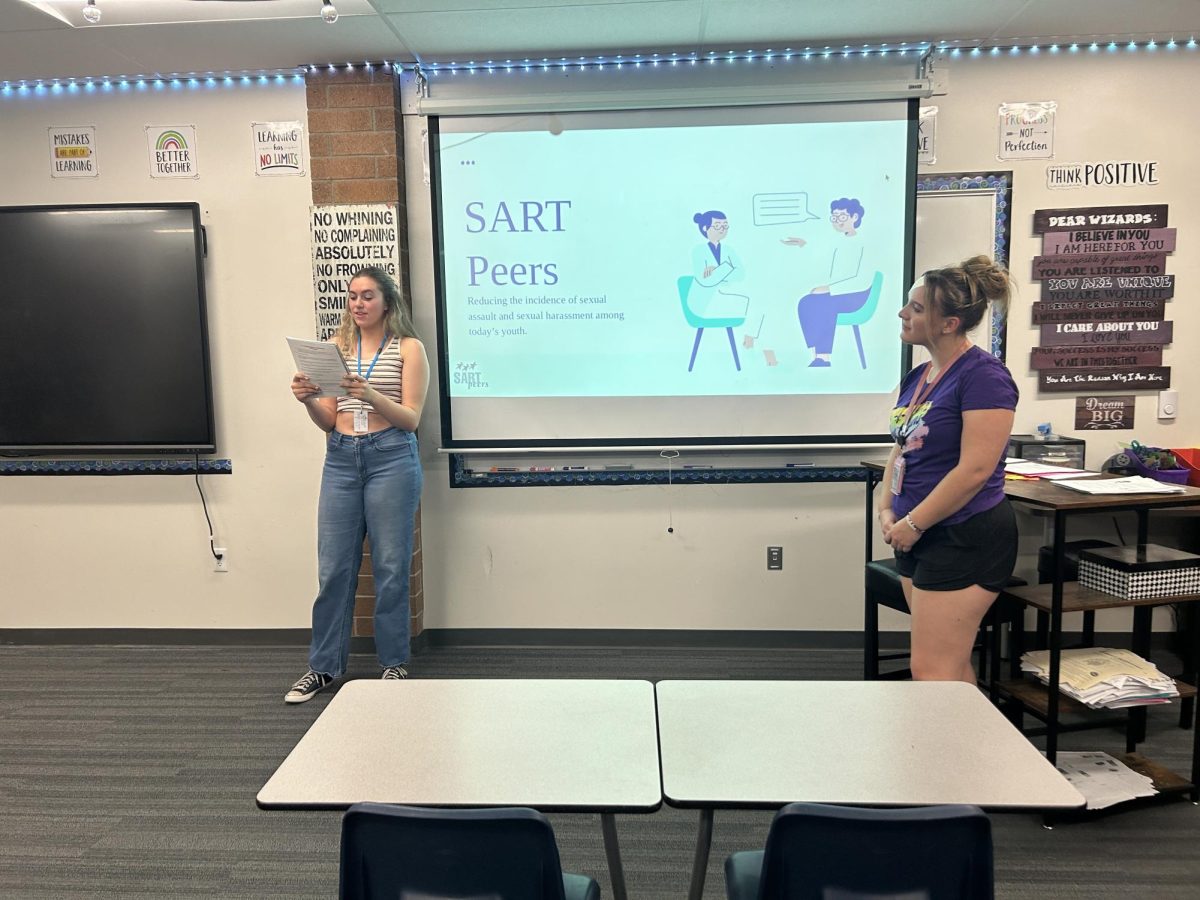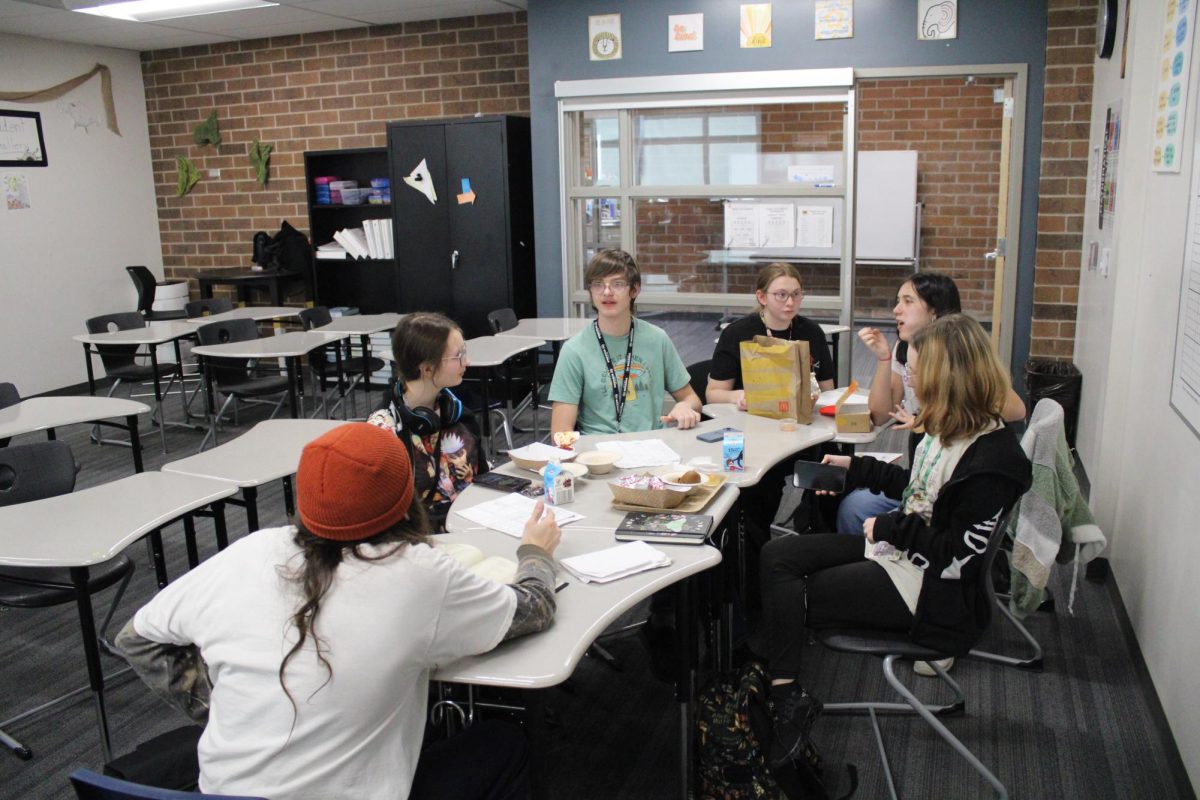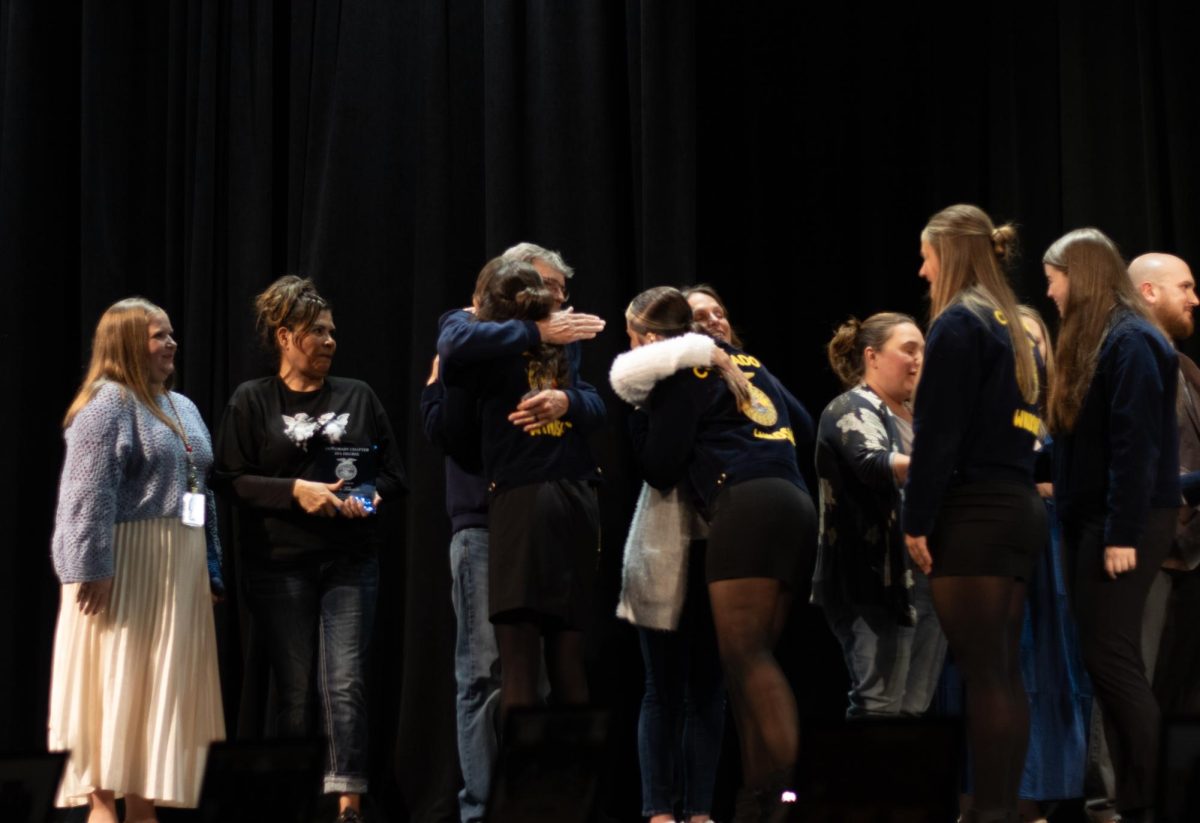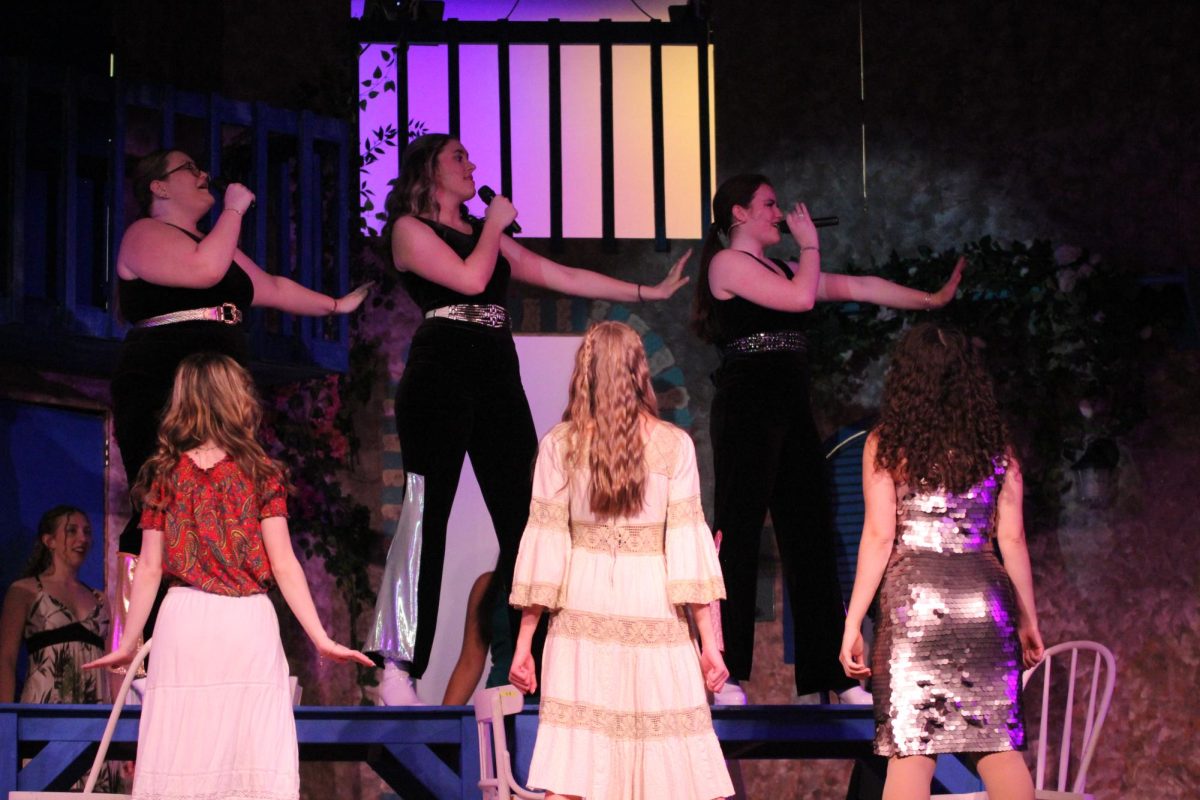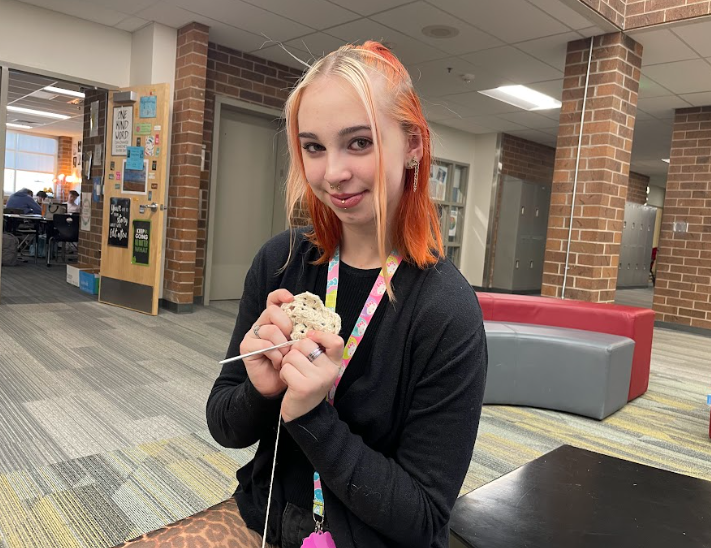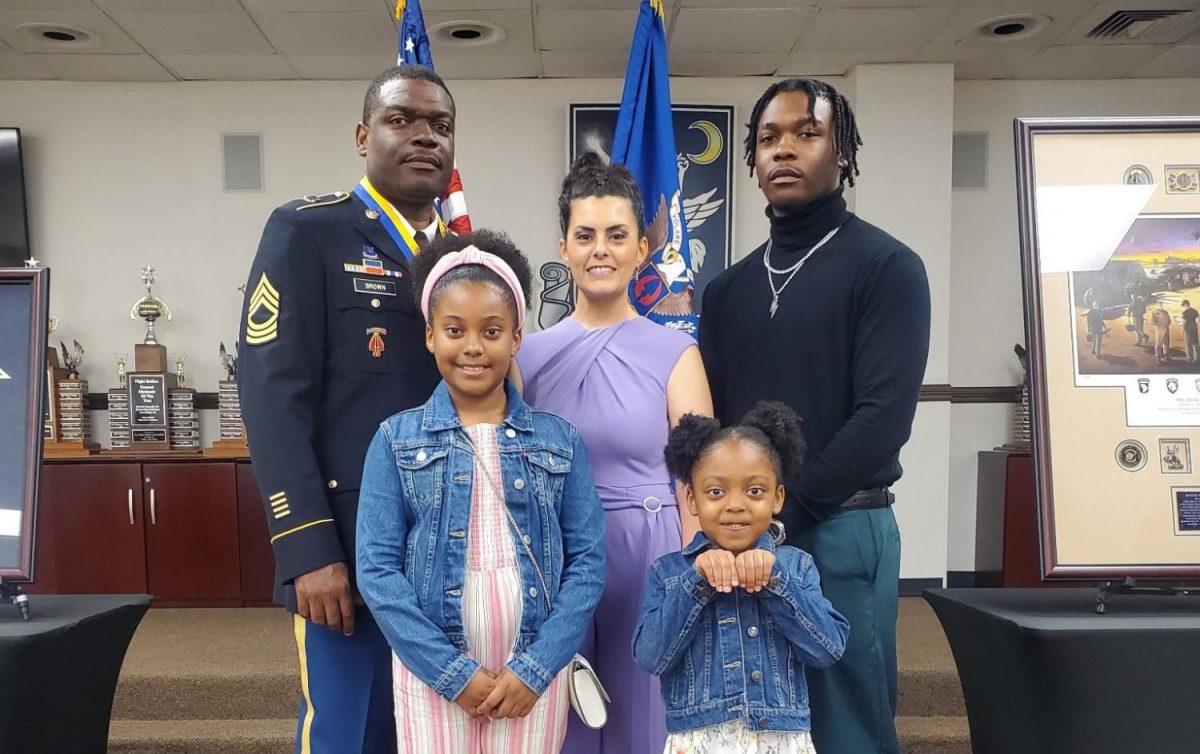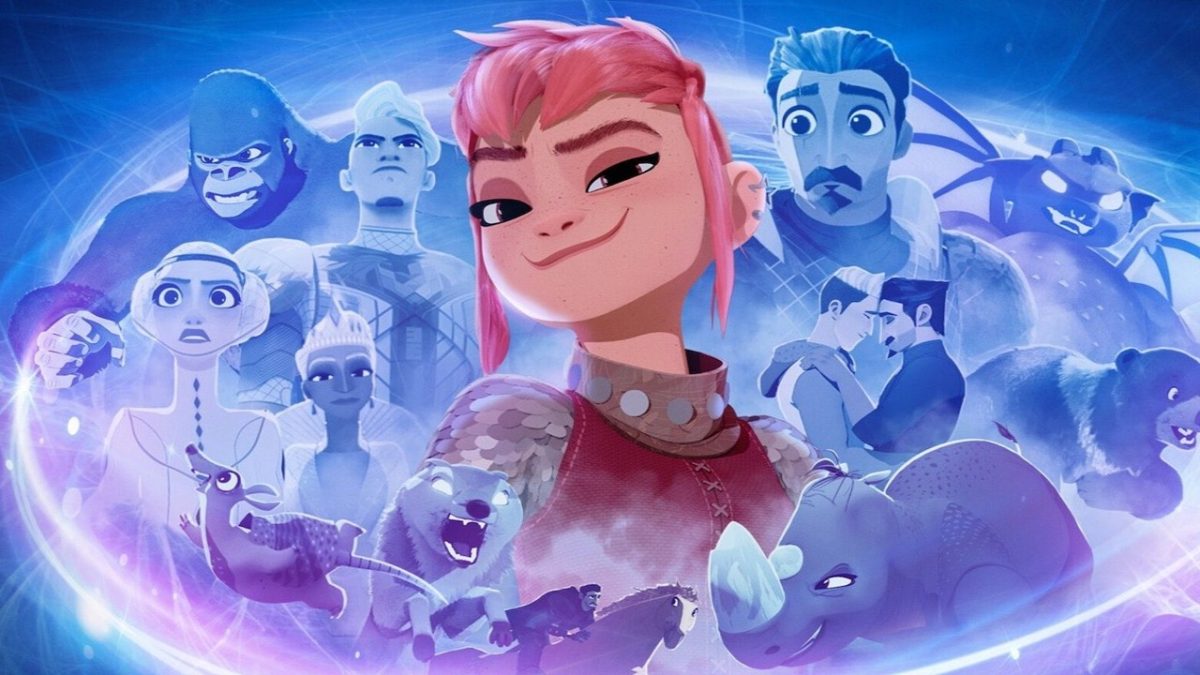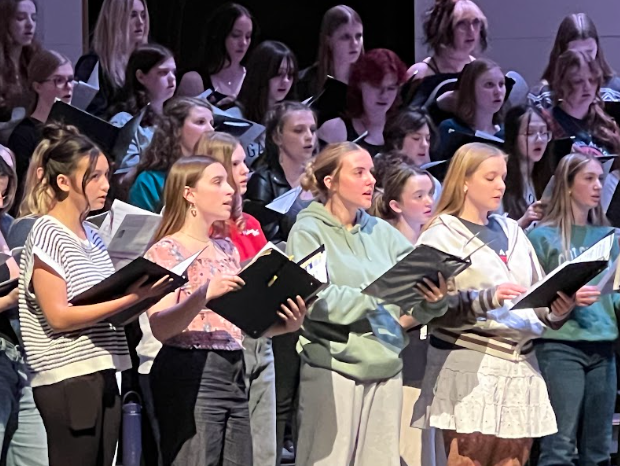In a creative and unique world that fuses medieval traditions (knights being the main police force) and futuristic technologies (flying cars and New York’s Times Square-style broadcasting screens), Netflix’s 2023 film “Nimona” tells a story of love, acceptance and redemption.
On the day of his knighting ceremony, top-of-his-class student Ballister kills the queen of the land and must flee the scene of the very public crime — except Ballister is innocent, and his sword was swapped for an enchanted one.
While in hiding, he is approached by what looks like a teenage girl who claims to want to be his sidekick in taking down the entire nation. After Ballister confesses that he did not purposefully kill the queen and is instead trying to clear his name, the girl looks disappointed but vows to help him, introducing herself as Nimona.
After Ballister is jailed and Nimona finds him to help him escape, it’s revealed that she has a startling secret: she is a shapeshifter and is the very monster that knights like Ballister swore to protect the nation from.
Mixing humor, complexity and emotional moments
This movie contains serious themes like the importance of mental health, which often in movies is softened by some semblance of comic relief. While sometimes comic relief acts as a counter-agent or distraction from depressing main themes, the comedy in “Nimona” complements the characters and adds context to each character’s motives.
The characters are also complex, with different motives, unique personalities and varying backgrounds. The character Ambrosius, one of Ballister’s fellow knights, is born into knighthood through a background of privilege and power (being related to Gloreth, the original knight of the realm), while Ballister himself is an orphan who became a knight through his bravery and willingness to work hard.
Nimona, however, as a centuries-old being, has a unique connection to the knights of the nation: she knew Gloreth personally and was the first “monster” Gloreth faced. In her background story, lovingly and beautifully told through a nonspeaking montage, Nimona, trying to find her place, shapeshifts into every creature she sees in an attempt to find a friend. Every creature of the forest rejects her, except for one: a little girl who teaches Nimona how to play a game.
The two grow close, Nimona even revealing her shape-shifting abilities to the little girl’s — Gloreth’s — delight, until the people of Gloreth’s village find out about Nimona.
One of the first spoken phrases of the montage is “she’s a monster.” Nimona is rejected yet again, this time by a friend’s hand when Gloreth tells her to “return to the darkness from whence (she) came.”
This emotional scene, accompanied by sad, orchestral music, allows for a complete change of pace from the more lighthearted fun and rock-and-roll scoring of the beginning of the movie. This is the brilliance of “Nimona”: It is bright and flashy but never without depth, and only when it’s appropriate.
The representation in Nimona’s and Ballister’s characters
“Nimona” contains a queer sub-plot — the complicated love between Ballister and Ambrosius, resolved with an on-screen kiss at the end — and it also has a gender ambiguous character, the eponymous character herself.
Nimona is always only ever Nimona. She’s not human, and she doesn’t particularly identify with a gender either, hence her answer of “I don’t follow” when Ballister asks if she can just be a girl.
“Nimona is a very, I guess you can say no pronouns, because they are what they are, they’re anything they want to be. And with that, they’re scared of being something others will not like. And the main character, Ballister, loved her for being her, or loved him for being him, and that’s the thing. There’s no actual thing that Nimona is, but Ballister still found love for Nimona,” Josaline Dominguez (11) said.
This kind of representation is rarely found in television, and rarely explicitly stated, especially in family movies. It’s taken far too long for gender ambiguity and queer love like this to be expressed so clearly in movies, so it’s incredibly important that “Nimona” took the step toward greater representation, without any cliches, and for a younger audience.
“If we’re just going to create media to just show gay people, then we’re doing it for the wrong reasons. If we’re trying to get kids to open up to gay people, then seeing it normalized (will do that). Just because, in the plot, no one bat an eye that they were gay, right? No one was like ‘Oh, that’s so weird.’ Everyone just acted like it was normal. No one exaggerated it. They were treated like they were a normal side couple to a movie, just like any other couple would be, and that’s why that’s important,” Ashtyn Ionita (10), a fan of the film since it was released, said.
It’s no surprise, however, that this kind of representation is in “Nimona” — the author of the original graphic novel, ND Stevenson, is non-binary themself and has created other works with queer representation (see “She Ra and the Princesses of Power.”)
The overarching theme
The theme of “Nimona” is expressed through Ballister’s slow acceptance of who Nimona is, his understanding of how Nimona chooses to express herself and his willingness to ask questions to get to know Nimona better rather than immediately isolating her.
Accepting Nimona’s differences, the two learn to trust each other, until the crux of the movie comes: Ambrosious tells Ballister that Nimona is the monster of a prophecy, destined to destroy the kingdom. Ballister confronts Nimona, saying, “You’re a…” and Nimona urges him to finish the phrase, saying, “Say it! Say that I’m a mon—” cutting her words off when Ballister draws his sword.
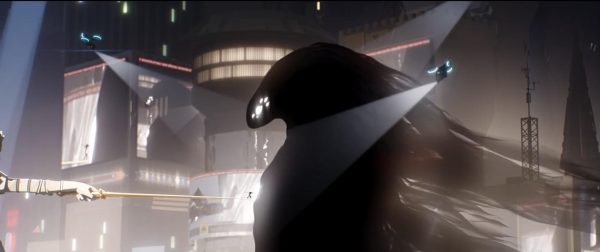
Nimona, in a moment of immense feelings of betrayal, transforms, becoming the very thing she urged Ballister to call her moments earlier: a monster. She trudges through the city as terrified villagers run from her as the director — that is, the woman who leads the knight-training academy that Ballister went to — rushes to find a weapon big enough to destroy the “monster.”
Nimona stops at a giant statue of Gloreth holding a sword out, as if about to strike, then braces herself against it, the sharp tip of the sword pointing at her heart.
Then Ballister appears on the flat face of the sword, and, pressing his hand to her heart, shows in this final moment that he truly does accept her. This scene shows his love for her, his confession that, no, he doesn’t actually think she’s a monster. And Nimona understands this, morphing back into her usual girl-like person to collapse in Ballister’s arms.
Mental health metaphors and why they’re important in kid’s movies
The scene toward the end of Nimona — the one where Nimona is braced before the tip of the Gloreth statue’s sword — is a show of depression and suicidal thoughts that is rarely seen in family movies due to its dark theme.
“You won’t see cartoon or animated movies often that are meant for kids dabble with some of the things that were in ‘Nimona,’ such as her attempting suicide at the end. That is a very touchy subject that they did very well, honestly. They had very heavy subjects throughout the whole movie and they made it okay for kids to watch,” Ionita said.
“Nimona” shows kids that depression exists and how to help friends or people they know when they are struggling with mental health issues. It shows that love, support and acceptance are the tools kids — and, really, everyone — need to help those with depression.
Not only does “Nimona” perfectly depict depression in a non-judgmental way and show how to be a friend to those struggling with their mental health, but it also introduces the topic of LGBTQ+ people to kids and their parents.
“(‘Nimona’ shows people that) the world is changing and you can be a part of it or at least care to like it. I mean, (queer people existing in media is) something that’s not going to change, it’s not going away, people that are queer aren’t going to stop being queer because of what someone says. And no matter what someone says, having it in a movie shows that ‘Hey, this is what’s happening, move with it.’ And it shows parents, ‘Hey, kids like this, at least try to be accepting,'” Dominguez said. “Oh, and it shows kids that they can be what they want to be, even if it’s a hippo!” Dominguez jokingly added.
Oscar nominee for Best Animated Feature Film
Netflix’s “Nimona” was Oscar nominated for Best Animated Feature Film (2024). The 2023 film competed with Studio Ghibli’s “The Boy and the Heron,” Disney’s “Elemental,” Neon’s “Robot Dreams” and Sony’s “Spider-Man: Across the Spider-Verse.” The Best Animated Feature Film this year went to “The Boy and the Heron.”











